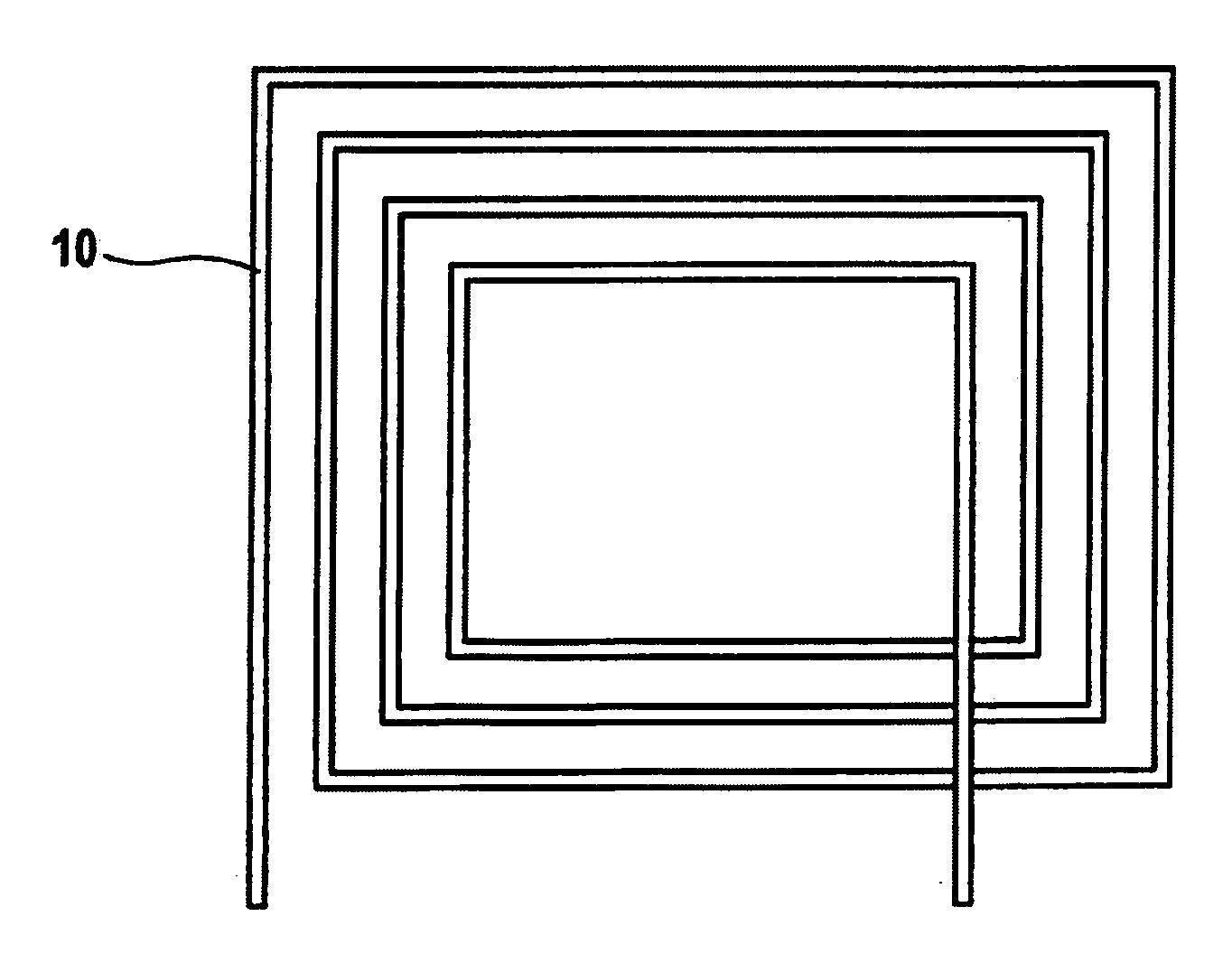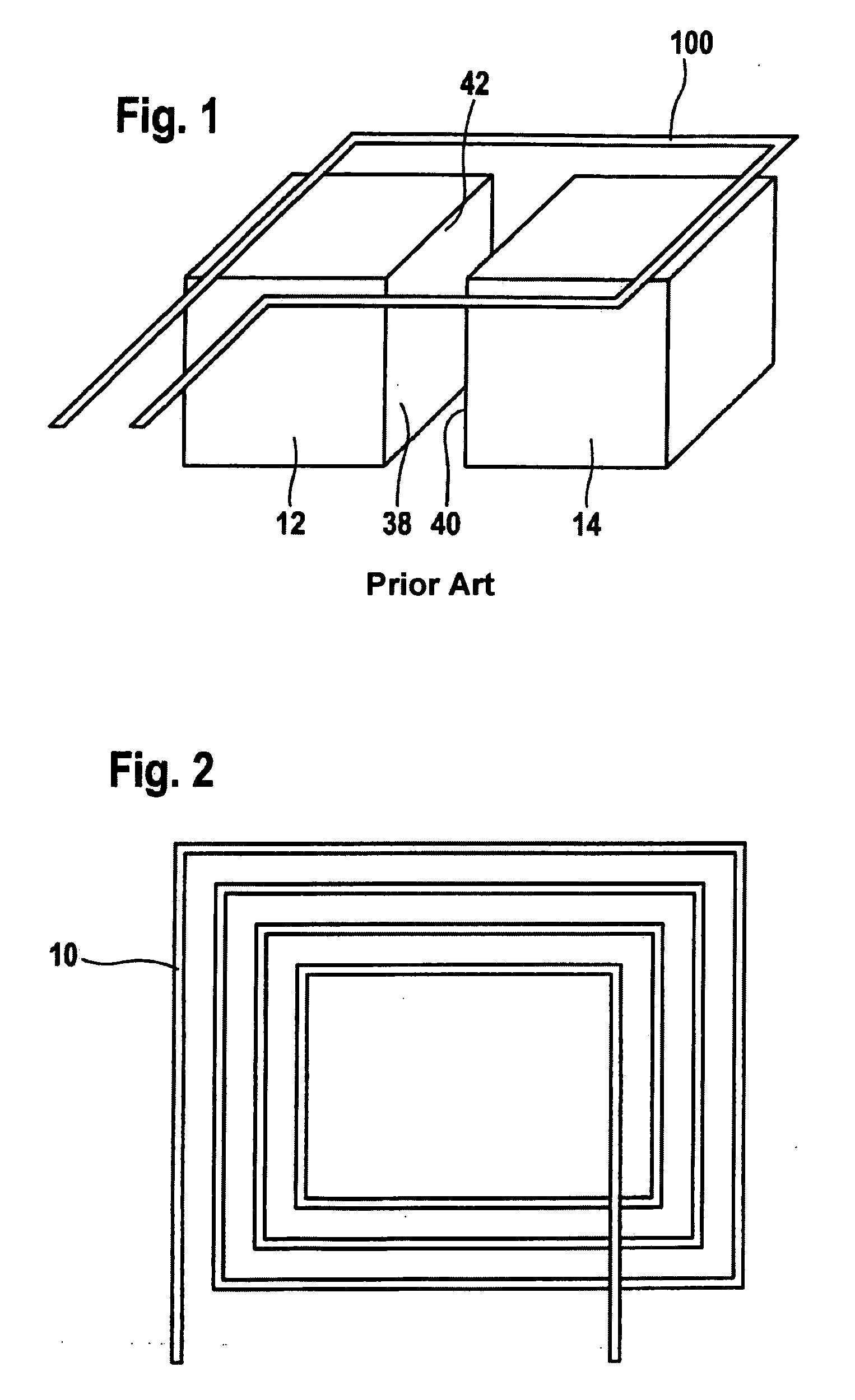Induction coil, method and device for inductive heating of metallic components
a technology of induction coils and metallic components, which is applied in the direction of induction heating, electric/magnetic/electromagnetic heating, electrical apparatus, etc., can solve the problems of uneven heating of the joining faces of known induction coils, difficult to achieve uniform heating of the components to be machined and joined, and increase the current flow between the two faces to be joined, so as to achieve uniform heating and easy extraction
- Summary
- Abstract
- Description
- Claims
- Application Information
AI Technical Summary
Benefits of technology
Problems solved by technology
Method used
Image
Examples
Embodiment Construction
[0032]FIG. 1 shows a schematic diagram of an induction coil 100 according to the related art. This shows the flat design of induction coil 100 having two components 12, 14 to which opposing joint faces 38, 40 are to be joined by inductive low- or high-frequency pressure welding. However, due to the flat design of induction coil 100, only a partial area of joining faces 38, 40, namely in particular an edge area 42, which is closest to induction coil 100 is heated. It is apparent that there is no direct heating via induction coil 100 in particular at the center of joining faces 38, 40.
[0033]FIG. 2 shows a schematic diagram of an induction coil 10 according to one exemplary embodiment of the present invention. Induction coil 10 is shown in an unfolded state; the meandering design of an induction coil 10 is clearly apparent. Other meandering forms, e.g., having rounded corner areas, are also conceivable. Induction coil 10 is usually made of copper or a copper alloy. Other metals or meta...
PUM
 Login to View More
Login to View More Abstract
Description
Claims
Application Information
 Login to View More
Login to View More - R&D
- Intellectual Property
- Life Sciences
- Materials
- Tech Scout
- Unparalleled Data Quality
- Higher Quality Content
- 60% Fewer Hallucinations
Browse by: Latest US Patents, China's latest patents, Technical Efficacy Thesaurus, Application Domain, Technology Topic, Popular Technical Reports.
© 2025 PatSnap. All rights reserved.Legal|Privacy policy|Modern Slavery Act Transparency Statement|Sitemap|About US| Contact US: help@patsnap.com



